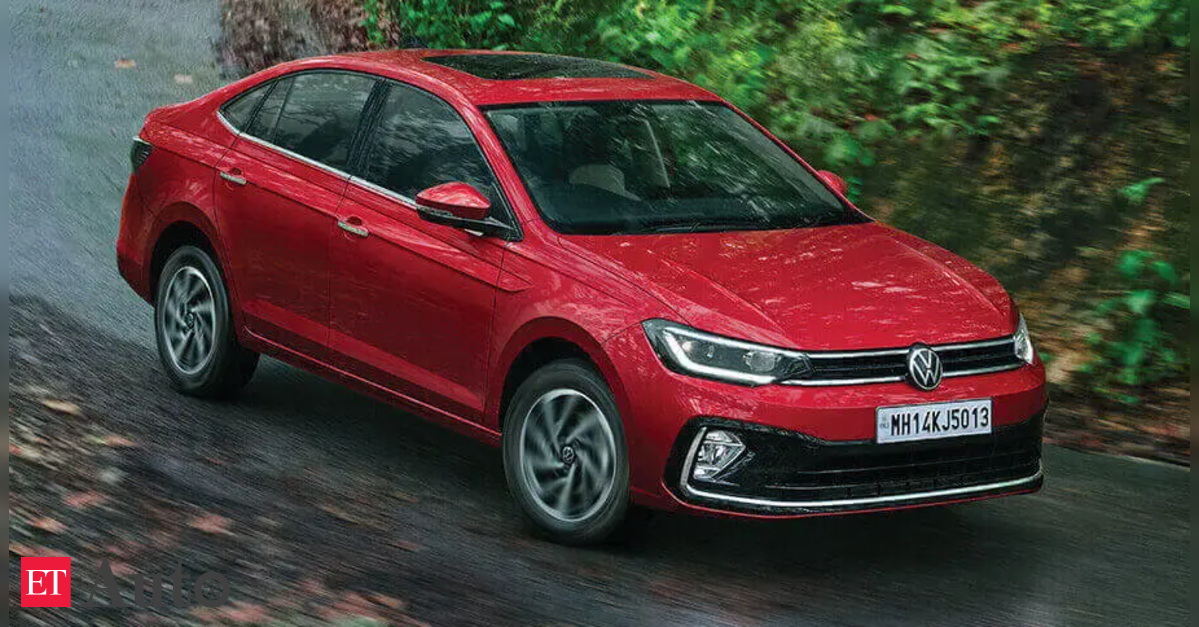 Volkswagen Virtus
Volkswagen VirtusThe Indian sedan segment has yet again recorded a decline in sales compared to the same period last year. In the first seven months of 2025 (January–July), sedan sales totalled 37,575 units, down 12 per cent from 2024. In this grim backdrop, the Volkswagen Virtus has emerged as a bright spot with 12,455 units sold, a 9 per cent growth YoY and accounting for over 33 per cent of the segment.
| Model | Jan’25 | Feb’25 | Mar’25 | Apr’25 | May’25 | Jun’25 | Jul’25 | Total | YTD’25 vs 24 |
| City | 765 | 889 | 1,170 | 406 | 491 | 709 | 646 | 5,076 | -29% |
| Ciaz | 768 | 1,097 | 676 | 321 | 458 | 1,028 | 173 | 4,521 | 7% |
| Slavia | 1,231 | 1,040 | 1,260 | 1,109 | 994 | 1,099 | 1,168 | 7,901 | -8% |
| Verna | 1,477 | 1,207 | 1,364 | 1,005 | 930 | 813 | 826 | 7,622 | -33% |
| Virtus | 1,617 | 1,669 | 2,012 | 1,676 | 1,708 | 1,981 | 1,792 | 12,455 | 9% |
| Total | 5,858 | 5,902 | 6,482 | 4,517 | 4,581 | 5,630 | 4,605 | 37,575 | -12% |
Segment Overview
Model-level analysis reveals that while most models are struggling, Virtus and Maruti Suzuki Ciaz have bucked the trend. In the case of the fomer, sustained demand has kept the momentum going while Ciaz has gained from a mix of heavy discounting, fleet sales and good after-sales service. Virtus: 12,455 units (+9%) – segment leader
Slavia: 7,901 units (–8%) – second-best, but declining
Verna: 7,622 units (–33%) – major drop
City: 5,076 units (–29%) – significant contraction
Ciaz: 4,521 units (+7%) – modest but surprising growth
Shifting consumer preferences
Over the last few years, India’s automotive market has seen a clear shift from sedans to SUVs which now account for over 50 per cent of total passenger vehicle sales. The allure of higher ground clearance, perceived safety, road presence and a commanding driving position have driven this change. Sedans, once aspirational, are now seen as less practical in cities with poor infrastructure and high speed breakers. With hatchbacks remaining more affordable, albeit in decline mode, sedans see themselves squeezed between SUVs and premium hatchbacks. While the Indian middle class has grown, the cost of car ownership comprising insurance, fuel, taxes etc has surged correspondingly. Sedans seem to be looked over while making a purchase especially when there are compact SUVs that offer similar pricing with more modern appeal. The Verna, City, and Slavia all fall into the ₹12–18 lakh bracket which is now crowded with sub-compact and mid-size SUVs like the Hyundai Creta, Kia Seltos, Maruti Suzuki Grand Vitara and Tata Nexon.
Despite their falling numbers, sedans continue to be relevant thanks to their superior ride quality and high-speed stability. They also offer better fuel efficiency due to lower drag and a more premium cabin experience in many cases. Sedans also have the ideal ergonomics for chauffeur-driven owners which is a sizable chunk in metros.
Despite these obvious pluses, the sedan segment continues to be under pressure from SUVs even while models like the Virtus have bucked the trend. It only goes on to show that right positioning, performance, safety and features make a huge difference. Sedans continue to offer value in refinement, dynamics and urban use which will hopefully keep them going across the Indian landscape.




)